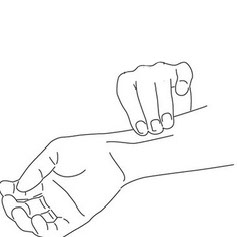
786 92

The pulse tells a story, the story of the heart and the heartbeat. Pulse rhythm, pulse strength and pulse pattern has been studied for a long time and from reading the pulse, a Tibb practitioner will be able to pick up the story of the heart and the heartbeat, the story of the bodies problems and how to treat the sickness naturally. The 'art' of reading pulses goes back to the Ancient Greek medical practitioners, further enhanced in the Indo-Pak subcontinent. The story of the pulse is like no other, a story of how the heart is pumping blood to the various organs of the body. Strength, digestion, bile, weakness, hypertension, depression, cancers, diabetes, clogging in ducts (bile, pancreas, spleen, adrenal, hypothalamus & arteries) and various other ailments are picked up just from reading the pulse.

- Digestion Problems
- Metabolism Problems
- Acidity/Heartburn/Ulcers
- Bowel Movement
- Weakness/Tiredness
- Depression
- Anxiety
- Poor Circulation
- Female Cycle Problems
- Male Sexual Health/ED
- LBP/HBP
- Inflammation

Gazelle Pulse
Pulses expand & contract and is interrupted. It lasts for a longer duration than normal, remains at a fixed height, then quickly increases to full height. The second beat begins before the first one is completed. The cause is the heat of fever. It is a common form of pulse rhythm.
Waving Pulse
Beats follow in a rolling manner, one upon the other, like waves. The beat is irregular. The cause is usually a weakness of chi. The significance of this pulse is that a form of the healing crisis by perspiration or diarrhea is imminent.
Saw-like Pulse
This is rapid, successive, and alternating in hardness and softness of moisture content. The irregularity is with respect to the size of expansion, and of hardness and softness. It is caused by moisture mixed with blood humor, or excess of yellow bile or phlegm humor; or it may be caused by swelling of the nerves.
Ant-like Pulse
This is similar to the wavy pulse, but more intense in the successive and soft aspects. It is the smallest, weakest, and most hurried of all pulses. It is caused by weakness of peristalsis which is because of poor digestion.
Rat-tail Pulse
This pulse alternates between excessive and insufficient dimensions. It often begins in an excessive mode, reverts to insufficient, then breaks midway and returns to excessive. It is a sign of malignancy and is caused by a very weak life force.
Flickering Pulse
Your first finger feels the pulse as small, the middle finger feels it large and swollen, and the last finger feels it small again. This signifies weakness of the arterial wall and destruction of tissues around the artery. The cause is extreme disability, often due to unresolved inflammations of long duration.
Cord-like Pulse
This feels like a band of thread or cord that has become twisted. There is an evident tension. The "twisted" sensation may only be for one part of the pulse and not the second beat. The cause is due to dry temperament.

